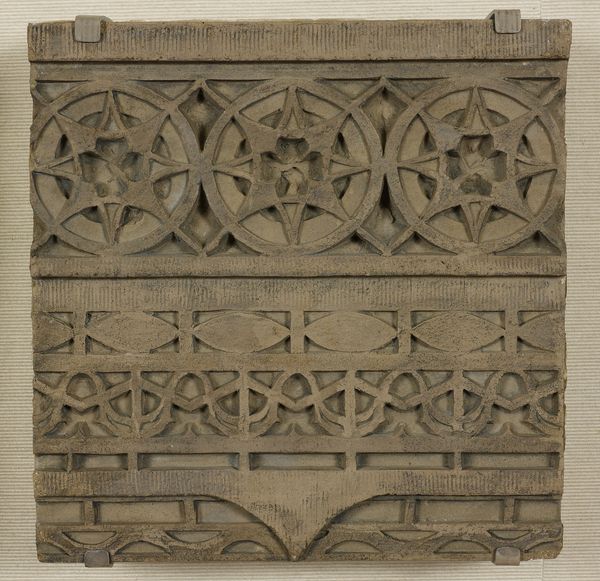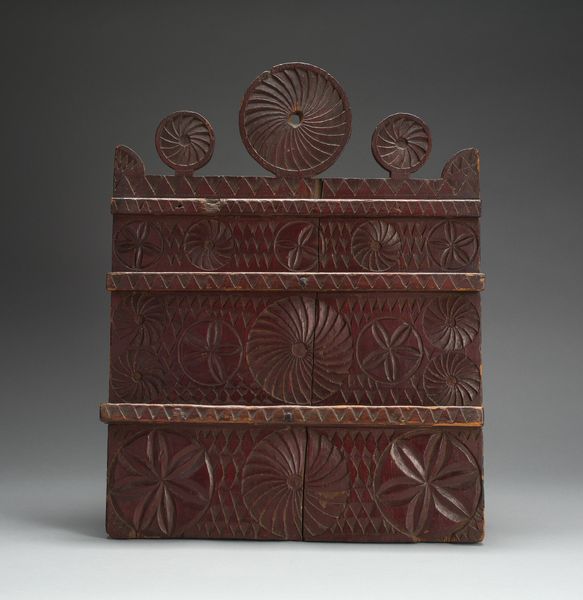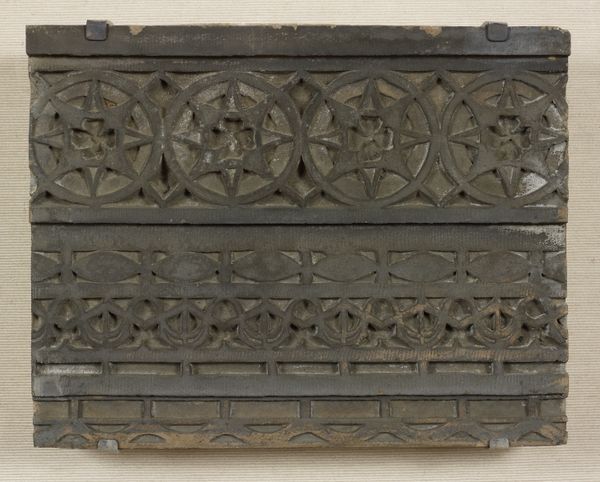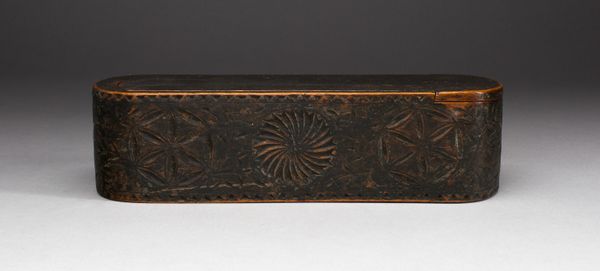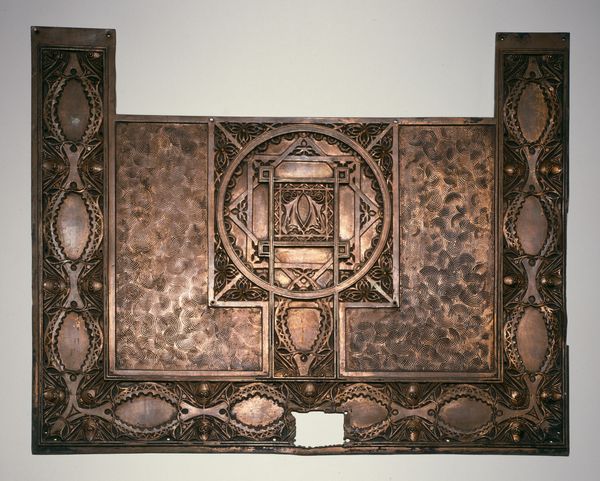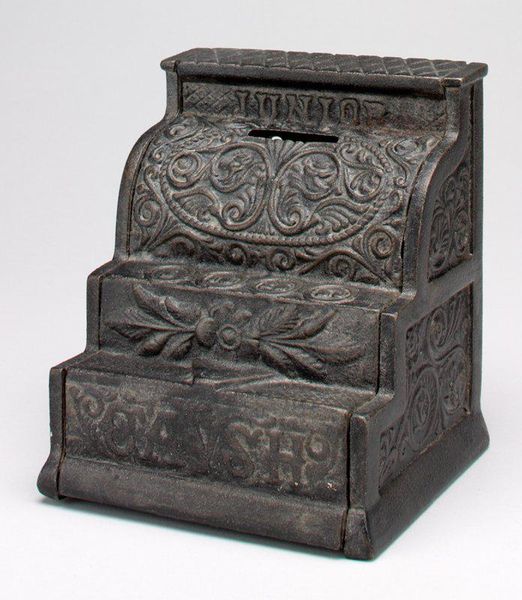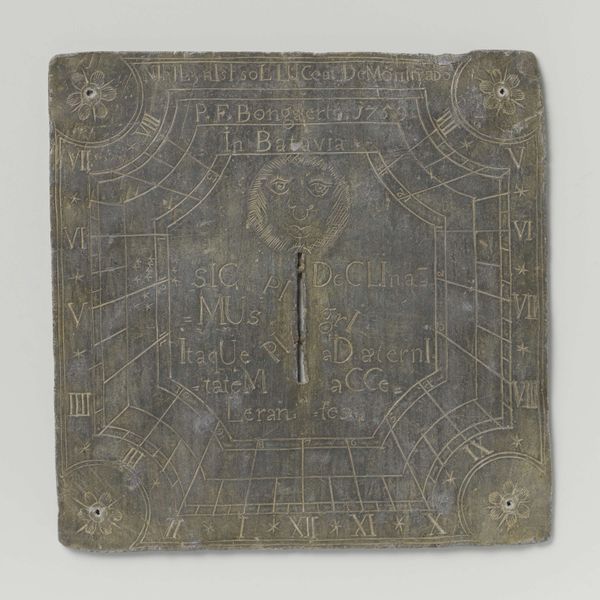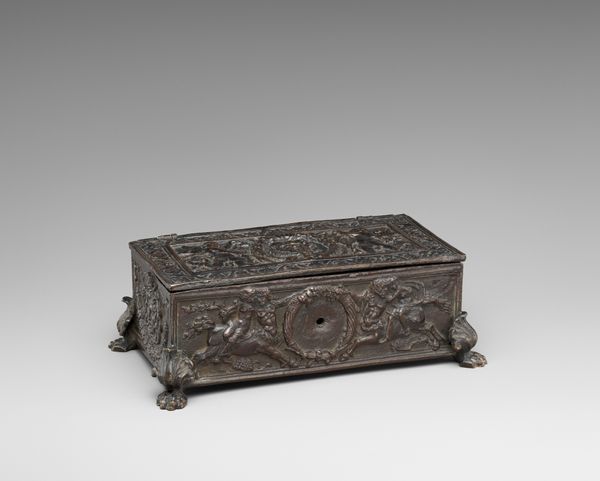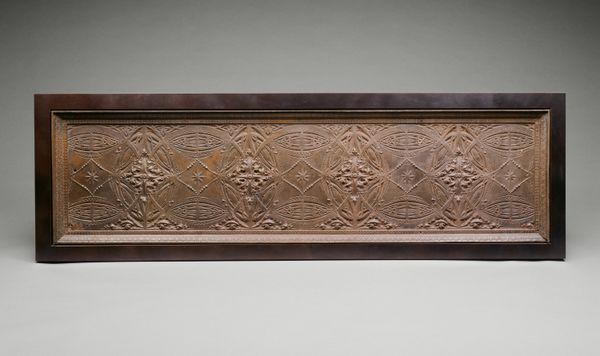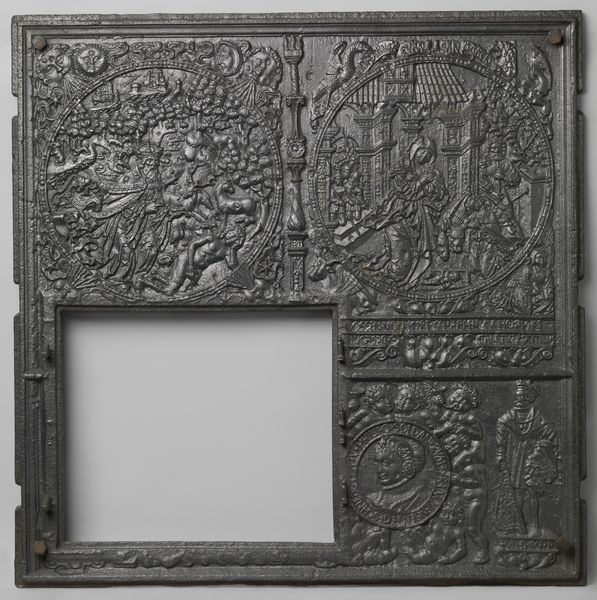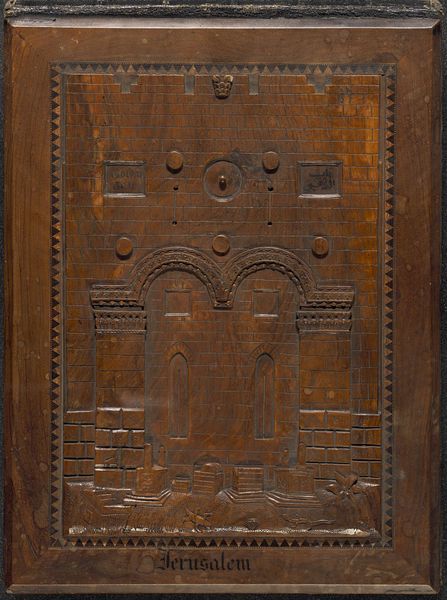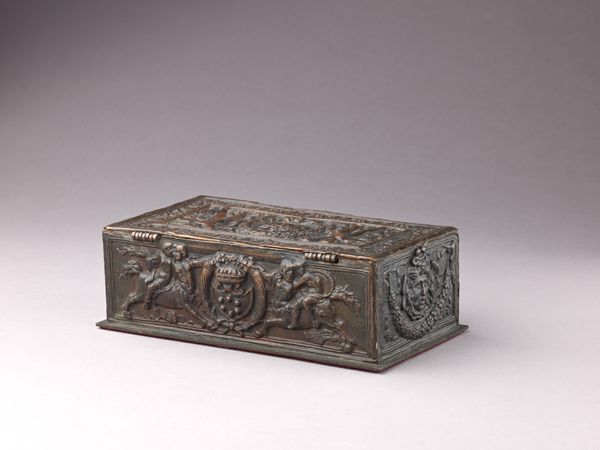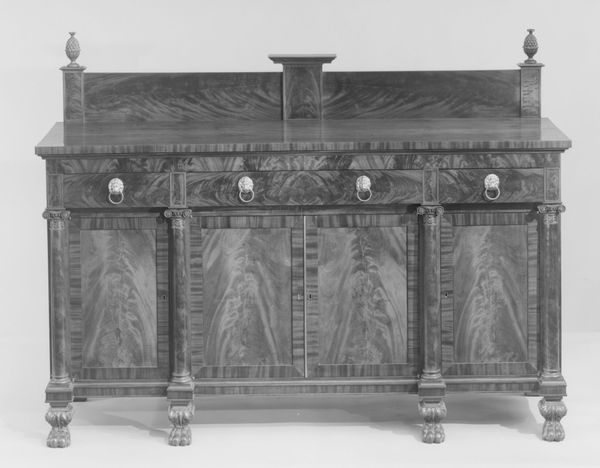
metal, relief, sculpture
#
neoclacissism
#
metal
#
sculpture
#
relief
#
sculpture
#
united-states
#
history-painting
#
decorative-art
Dimensions: 3 parts: center 34 inches tall x 27 inches wide x 1/2 inch wide; about 100 lbs 2 side pieces each 34 inches tall x 16 inches wide x 1/2 inches each about 45 lbs
Copyright: Public Domain
Editor: We're looking at a cast iron fireback from the Hopewell Furnace, dating to around 1795-1800. The relief sculpture is pretty striking; there's this intense symmetry and a surprising level of detail considering it's a functional object. What can you tell us about it? Curator: This piece exemplifies how neoclassical aesthetics infiltrated even the most utilitarian aspects of early American life. Note the material itself, cast iron. Its production signifies industrial labor and resource extraction from a specific geographical and social context – Hopewell Furnace. It's not just about aesthetic pleasure; it’s about the labor required, the mines exploited, and the societal structures supporting that process. Editor: So, beyond the decorative elements, you see the labor and the raw materials speaking to a larger system? Curator: Precisely. The "high art" references—the symmetry, the relief sculpture—are superimposed onto an object directly related to domestic labor. Where was this fireback likely positioned within the home, and what activities would it have been related to? Considering this provides a powerful insight into the lives and social relations during its use. The neoclassical imagery wasn't just for show; it was integrated into the daily lives and activities supported by this piece of ironware. It attempts to beautify and thus, legitimize the materiality of domestic activity within the ideals of emerging American taste. Editor: That’s a fascinating way to look at it. It’s easy to see it as simply a decorative object, but understanding its production and the lives it impacted changes everything. Thanks. Curator: My pleasure. Thinking about art's material conditions, and its place in wider historical processes is critical for any thorough interpretation of historical decorative art!
Comments
No comments
Be the first to comment and join the conversation on the ultimate creative platform.
